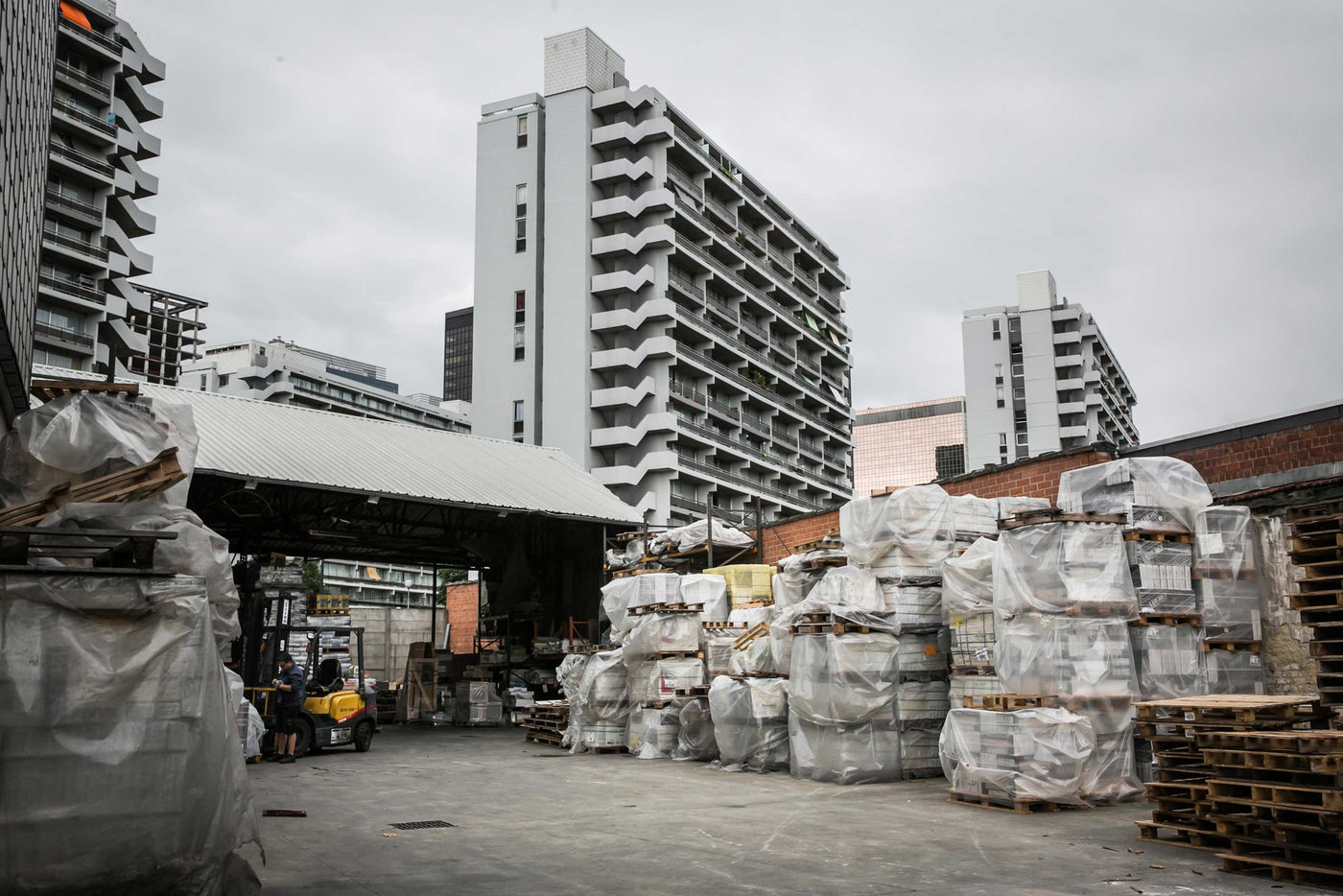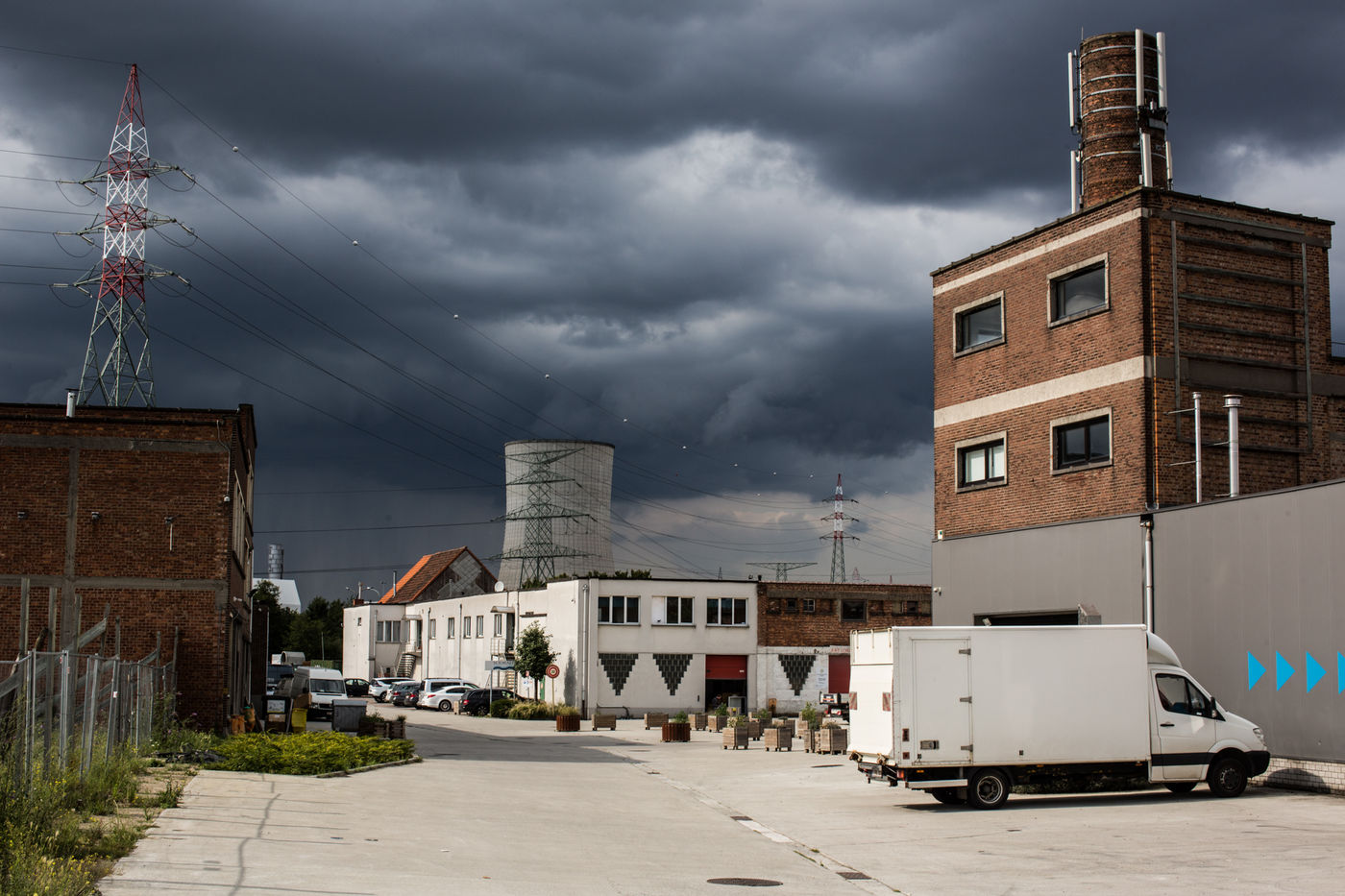

It is easy to say that a city needs manufacturing, but how do you make space for this urban economy, in its true colours? Researchers, architects, policy-makers, investors, project developers and citizens were increasingly won over by the idea of the productive city. It had captured people's attention. But now that the theme had been placed on the agenda, the time was ripe for the next step, which involved research by design. Where, how and for whom do we make room for economic activities? The beginning of this phase more or less corresponded to the run up to the IABR 2016, the research biennale in Rotterdam devoted to the Next Economy. We acted as atelier master with our team. The new research field attracted international expertise, financial resources and test locations.
Mark Brearley Film (2016)
Our meeting with the British architect Mark Brearley was a game changer. While we primarily viewed our home city of Brussels as a city with hundreds of problems, Brearley called it a ‘city of miracles’. Brussels, unlike other European cities, has quite an extensive urban economy, and, as Brearley says: A Good City Has Industry! Later we used this provocative statement as the title of an exhibition we organised in 2016, in the Ravenstein Gallery in Brussels. On the occasion of the IABR 2016 – The Next Economy, OVAM produced a film with Mark Brearley in the main role.
IABR 2016 – The Next Economy
The 2016 edition of the IABR in Rotterdam was devoted to The Next Economy. In our capacity as atelier master we were involved in the cultural event in Rotterdam and also contributed with a mini-exhibition in Brussels, in which we included a screening of the film with Mark Brearley. The exhibition pointed out the importance of cultural production for our practice. But that wasn't all. The IABR is also a work biennale. During a three-month period, lectures, debates, guided tours and design ateliers took place almost daily. This enabled us to increase the enthusiasm of a broad audience of policy-makers, professionals, academics and students with regard to the new vision of the productive city.
Atelier BXL – A Good City Has Industry (2016)
From September 2016 to January 2017, we organised an exhibition together with lots of partners in the Brussels Ravenstein Gallery at BOZAR. A Good City Has Industry featured in large letters on the gallery’s windows, along which thousands of commuters pass every day. Among other things, the exhibition displayed the research by design carried out by several architectural firms into a number of precarious industrial sites in Brussels. The exhibition's visitor guide concisely sums up the most important insights of the research by design into the productive city in Brussels. The booklet provides the keys for building the productive city using ten rules of thumb.
Series of photos by Bas Bogaerts (2016)
Unlike many other European cities, there is still a lot of economic activity and industry embedded in the urban fabric of Brussels. Photographer Bas Bogaert went in search of it in the districts of Brussels and produced an impressive reportage that shows a diversity of industry, logistics, crafts and new economies. The photo reportage was displayed at the exhibition A Good City Has Industry.
Mapping the Urban Economy (2016-2020)
This map goes one step further than the Thinkers-vs-Makers map. It's a process that has taken years, and is still not finished. The map lists and classifies every company in the Brussels-Capital Region. It fills a missing link that many cities struggle with, namely their difficulty in connecting their spatial and economic policies. Only when they obtain a detailed picture of the location of each type of activity can cities optimally coordinate their spatial, economic and social policies. The places with the greatest urban economic diversity are often also the most lively and vibrant neighbourhoods. We first carried out this exercise in Brussels and the Vlaamse Rand, and later also in other cities such as Kortrijk and Herentals.
City of Flows (video) (2016)
Due to the scarcity of materials and energy, the transition to a circular economy is inevitable. But if we want to embed the circular economy in the city, we need to know how material flows criss-cross the city. As part of the exhibition A Good City Has Industry the Amsterdam design agency Fabric mapped Brussels’ flows of building materials, water, waste and food. Fabric considers a city to be a living 'metabolism'. The ultimate goal is to create a circular city. This is a city where all the different flows are optimally aligned and as few precious raw and other materials and energy as possible are lost.
Work models for the Productive Metropolis (2016)
The research by design performed as part of the Atelier Brussels Productive Metropolis yielded a wealth of new insights. One of the design teams, plusofficearchitects in collaboration with the WRKSHP collective, initially set to work in the Brussels districts along the canal. The designers point to the importance of creating space in all shapes and sizes as locations where the manufacturing economy can flourish. Among other things, they provide a new interpretation of the archetype of the garage box, as a place where start-ups develop their first prototypes. One of their most remarkable designs is situated at Vergotedok. Here, on the boundary between the productive and the residential city, the designers draw a productive tower called the Tinker Tower. It is a vertical factory where diverse manufacturing companies are connected to the canal and the industrial districts. The Tinker Tower makes production prominently visible in the public space. It celebrates industry in the city and restores the pride of manufacturing.